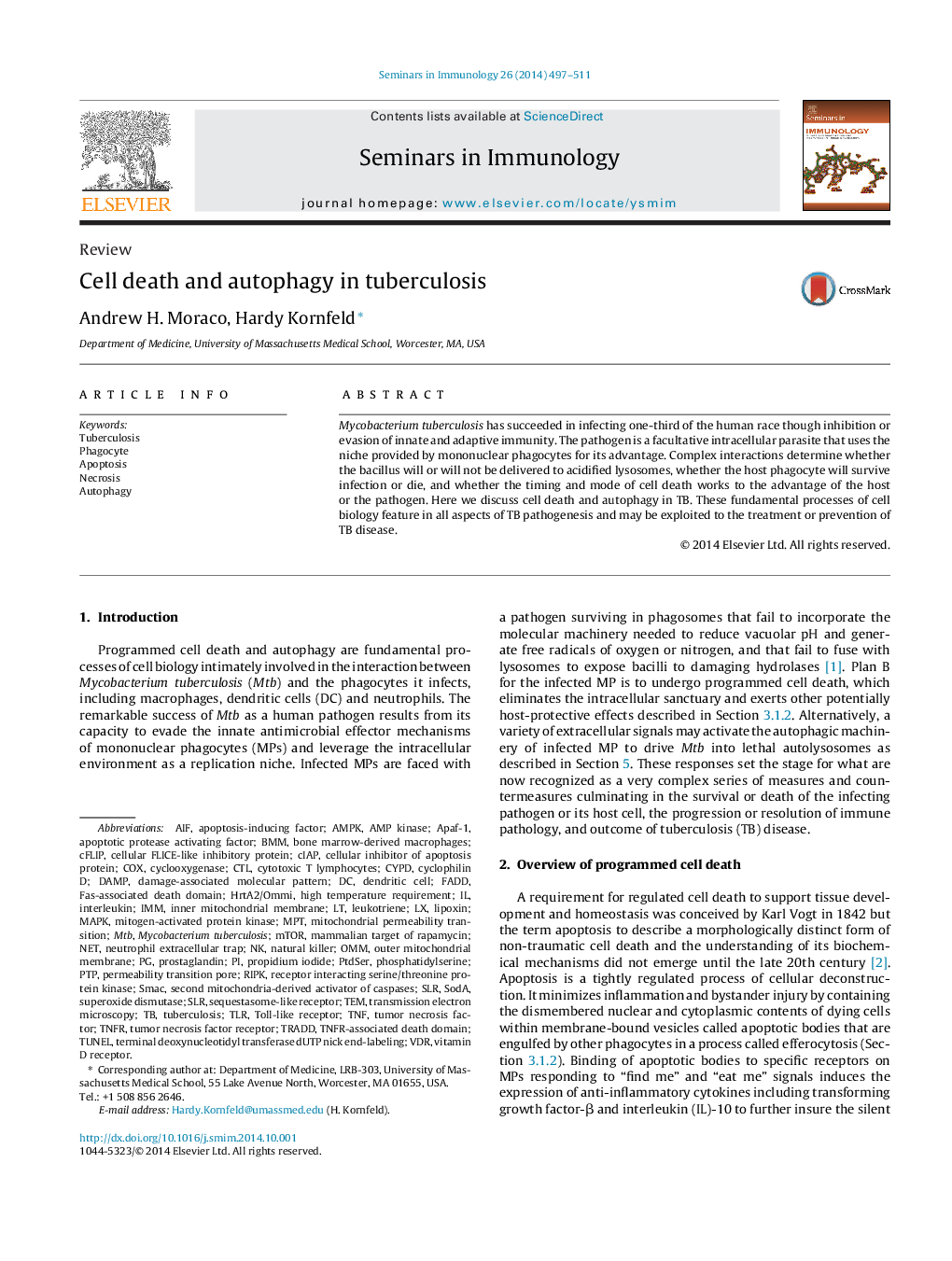| Article ID | Journal | Published Year | Pages | File Type |
|---|---|---|---|---|
| 6125886 | Seminars in Immunology | 2014 | 15 Pages |
Abstract
Mycobacterium tuberculosis has succeeded in infecting one-third of the human race though inhibition or evasion of innate and adaptive immunity. The pathogen is a facultative intracellular parasite that uses the niche provided by mononuclear phagocytes for its advantage. Complex interactions determine whether the bacillus will or will not be delivered to acidified lysosomes, whether the host phagocyte will survive infection or die, and whether the timing and mode of cell death works to the advantage of the host or the pathogen. Here we discuss cell death and autophagy in TB. These fundamental processes of cell biology feature in all aspects of TB pathogenesis and may be exploited to the treatment or prevention of TB disease.
Keywords
CypDTLRAPAf-1FADDMTBVDRMPTTNFRcFLIPPTPBMMCyclophilin DTRADDPtdSerAMP kinaseAMPKmTORSLRCTLDAMPSMACCOXOMMCellular FLICE-like inhibitory proteinapoptotic protease activating factorTNFnatural killercIAPMAPKcyclooxygenaseAIFAutophagyPermeability transition poredamage-associated molecular patternmitochondrial permeability transitionimmTeminterleukinTuberculosisneutrophil extracellular trapTUNELToll-like receptorFas-associated death domainNETApoptosisinner mitochondrial membranesecond mitochondria-derived activator of caspasesRIPKDendritic cellapoptosis-inducing factorouter mitochondrial membranetumor necrosis factorPhagocytePhosphatidylserineCytotoxic T lymphocytesLeukotrienelipoxinBone marrow-derived macrophagesMycobacterium tuberculosiscellular inhibitor of apoptosis proteinTransmission electron microscopyNecrosismammalian target of rapamycinmitogen-activated protein kinasePropidium iodideprostaglandintumor necrosis factor receptor
Related Topics
Life Sciences
Immunology and Microbiology
Immunology
Authors
Andrew H. Moraco, Hardy Kornfeld,
